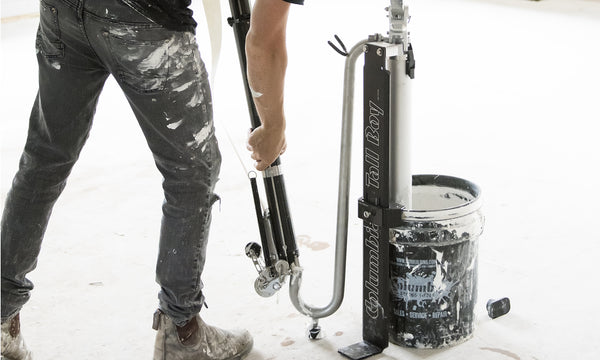Award Winning Service
Award Winning Service


The realm of construction has always been dynamic, with constant advancements aimed at enhancing precision and improving efficiency. In line with this trend, automatic drywall taping tools have emerged as game-changers. These tools, which include the automatic taper, drywall flat boxes, and angle heads, among others, are proving to be must-haves for contractors. This blog post will illuminate why these tools are increasingly indispensable, exploring their benefits, limitations, performance, and the transformative results contractors can expect from them.
Automatic drywall taping tools are heralding a new era in the construction industry. These tools are designed to automate and streamline processes, reducing the manual effort required in drywall installation and finish. More specifically, tools such as the automatic taper, often referred to as the 'drywall bazooka', and the drywall flat boxes and angle heads, are leading this transformative wave. With a firm focus on reducing labor intensity, these tools bring increased efficiency and precision to the table.

Information shows Automatic Taping Tools boost productivity, safety, and save money for large contractors over time.
Adopting automatic drywall taping tools can offer a plethora of benefits. Foremost, they increase efficiency, enabling contractors to complete projects faster and cater to a higher volume of work. Precision and consistency are other crucial advantages, as these tools minimize human error, resulting in a smoother and higher-quality finish.
These tools also promote better ergonomics, as they reduce the physical strain on contractors, making work less labor-intensive. The impact of such tools on the industry is evident in the popularity of Columbia Taping Tools, renowned for their exceptional performance, durability, and manufacturing.

Columbia Predator is being used to effortlessly tape flat seams at a fraction of the time. This carbon fiber automatic taper is popular among professionals for its lightweight and durability.
Let's take a closer look at some examples of automatic taping tools and their fundamental uses:
A comprehensive set that's perfect for professionals looking for an all-in-one solution is the Columbia Tactical Set. This set covers a wide range of tasks, offering excellent versatility and performance.
Despite the numerous benefits, it's important to acknowledge the potential limitations of automatic taping tools. Initial costs can be high, and some contractors might find these tools challenging to master initially. However, these limitations can be mitigated by viewing the investment in a long-term lens and through continuous practice. Investing in quality tools like those from Columbia or Tapetech can also ensure durability and superior performance, justifying the initial expense.
When considering a purchase, focus on quality and durability. It is beneficial to opt for industry-trusted brands such as Columbia and Tapetech.Additionally, factor in your specific needs and the volume of work you handle. If you’re involved in high-volume drywall projects, tools like the automatic taper become even more essential.
Remember, while automatic taping tools require a significant upfront investment, the improved productivity and quality they offer make them well worth the cost over time. It's also important to maintain these tools properly to extend their lifespan and keep them performing optimally.
In conclusion, automatic drywall taping tools are revolutionizing the drywall industry. With their impressive efficiency, precision, and consistency, tools like the automatic taper, drywall flat boxes, and angle heads have become indispensable for contractors. While there are limitations and challenges to overcome, the benefits and the transformative results these tools bring are undeniable.
As the industry continues to evolve, these tools will undoubtedly play an integral role in shaping its future. At Timothy's Toolbox we believe making a strategic investment in quality tools from trusted brands like Columbia and Tapetech can significantly elevate your work quality and productivity, making you more competitive in this fast-paced market. So, embrace the automation wave and experience the transformation.
{"one"=>"Select 2 or 3 items to compare", "other"=>"{{ count }} of 3 items selected"}
Leave a comment